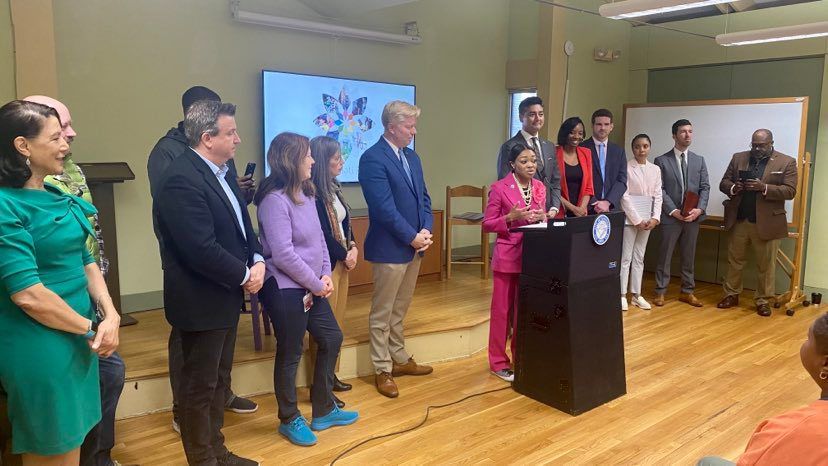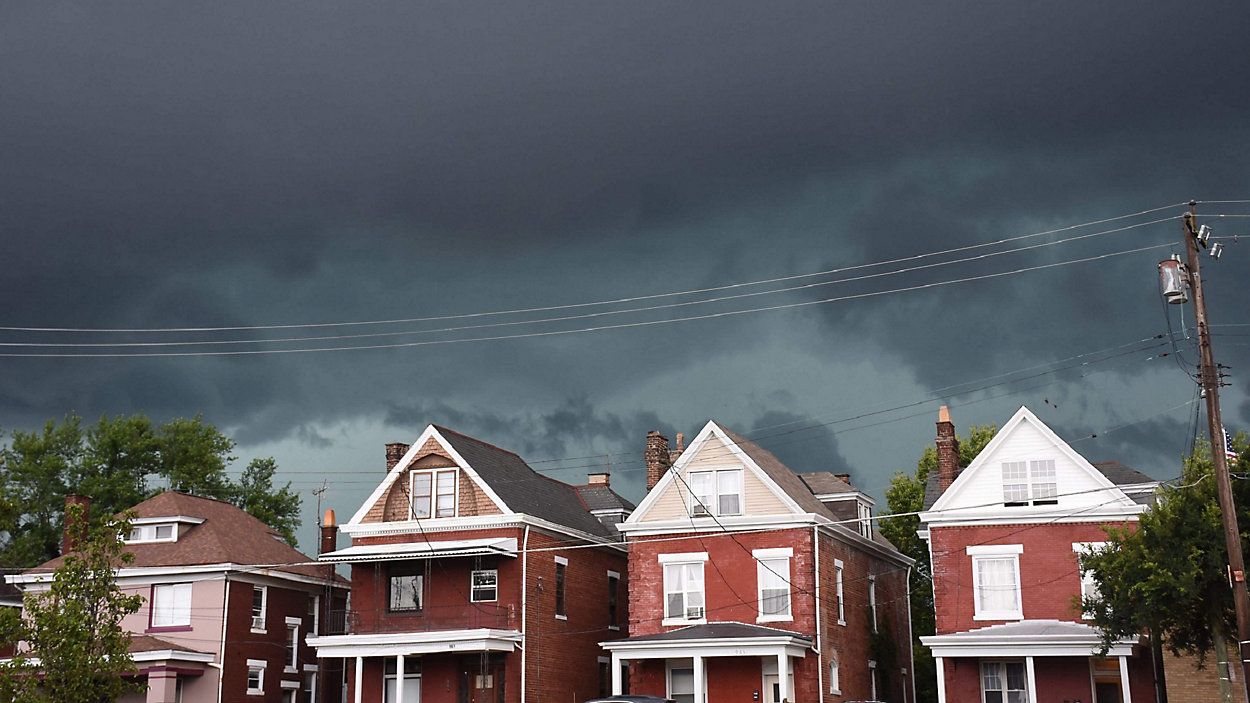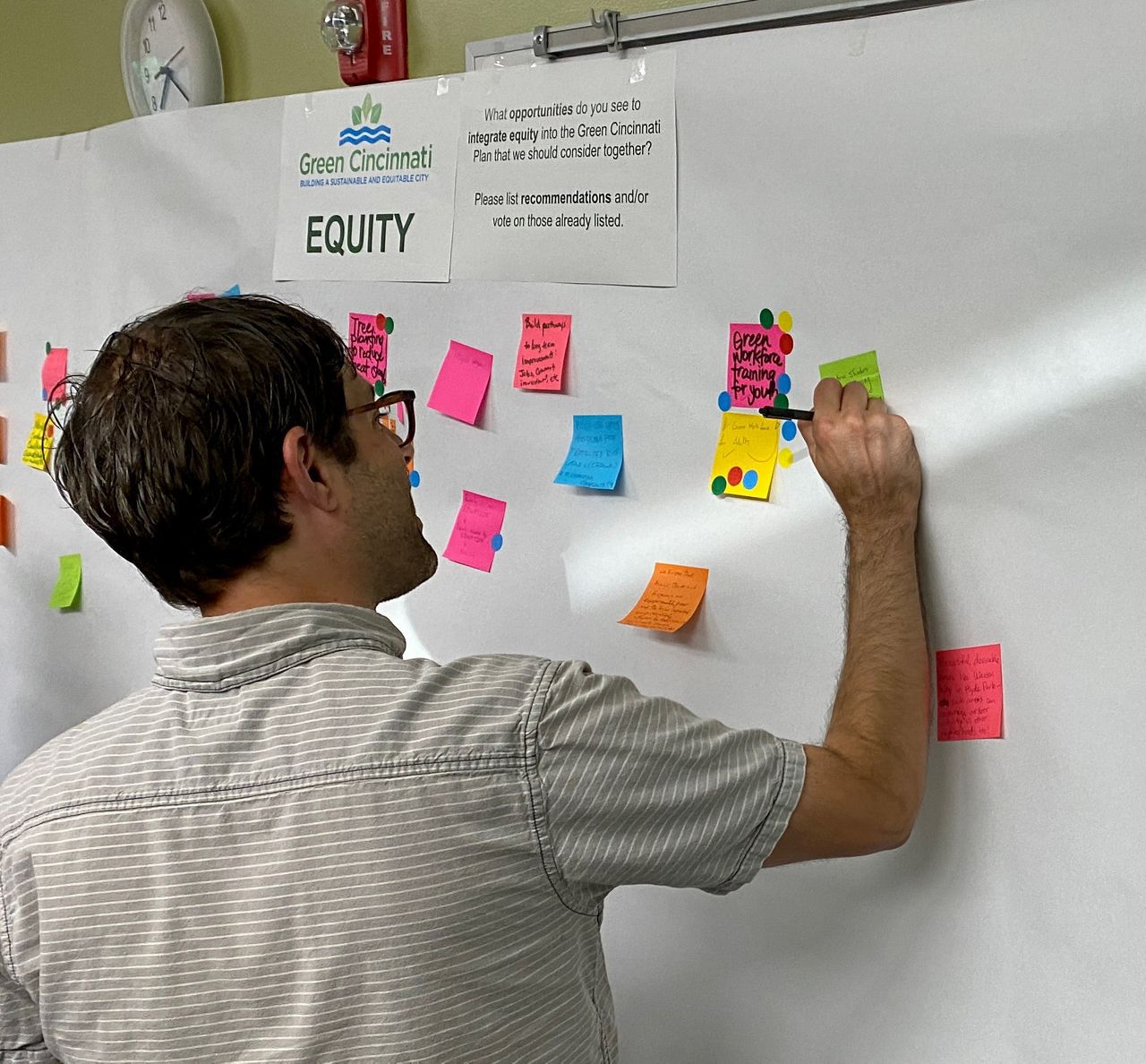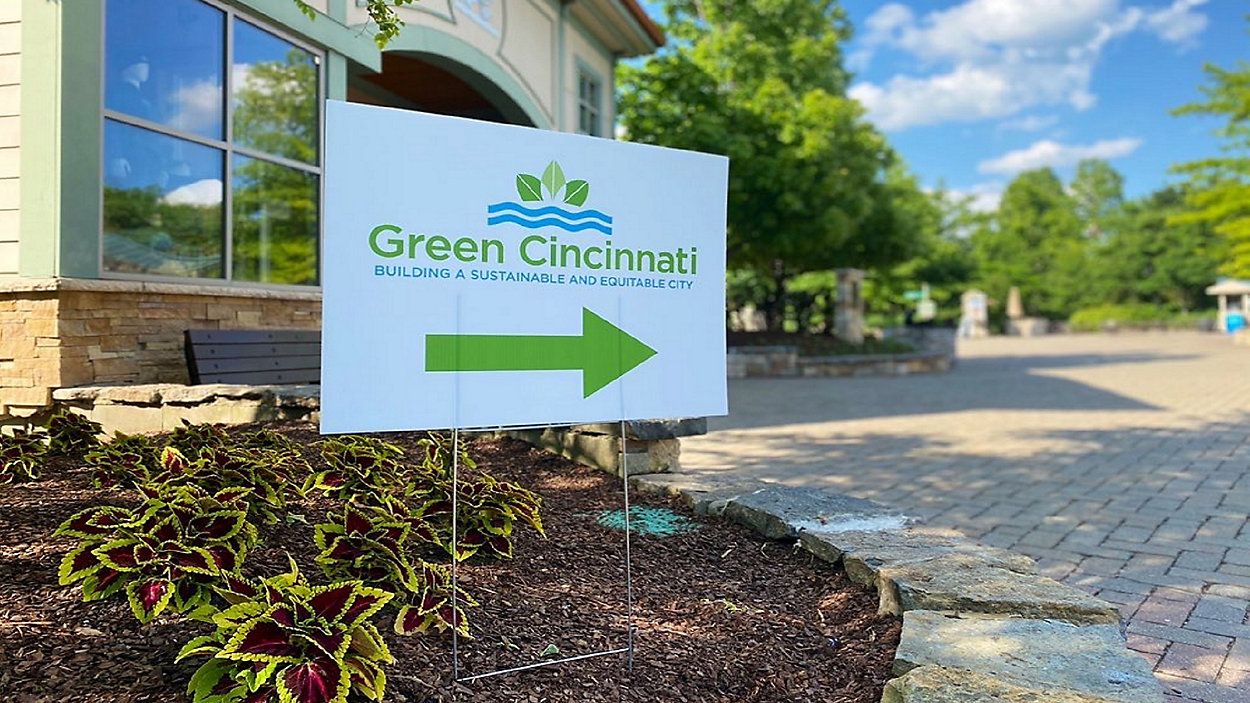CINCINNATI — After more than a year of planning, more than three dozen of community meetings and thousands of comments from residents, the city of Cincinnati has unveiled its framework for preparing for climate change over the next five years.
What You Need To Know
- City Council plans to approve the Green Cincinnati Plan update on April 12
- The 172-document features goals and strategies for addressing climate change at the local level
- The document receives an update every five years to reflect changes in science and technology
- City officials placed an emphasis on equity this year
On Monday, elected officials, environmental agencies and city staff debuted the 2023 Green Cincinnati Plan (GCP) update at the Civic Garden Center on Reading Road. Considered the city’s playbook for climate action, the 172-page document includes 30 goals, 40 strategies, and 130 actions aimed at making Cincinnati more sustainable and resilient.
The last update in 2018 created a path for meeting the city’s previous goals for carbon reduction, she said. That included creating a 100-megawatt array in Highland County, Ohio, to power city-owned buildings.

But recent science shows more needs to be prepare the city to deal with them, said Council member Meeka Owens, chair of the Climate, Environment, and Infrastructure Committee.
The 2023 GCP plan reasserts the city’s desire to cut local carbon emissions in half by 2030. But for the first time, the city is committing to becoming carbon neutral by 2050.
The City Planning Commission approved the draft plan in mid-March 17. It’ll go before Owens’ committee on April 11. The goal is to have a full vote on City Council to approve it the next day.
“The continuing growing threats of climate change will require all of us to do something differently and demand more from ourselves,” the first-term City Council member said.
Creating a more equitable and resilient city
Climate change is a clear and present danger to all residents, Owens said. But she stressed it won’t affect everyone in the same way. She noted the quality-of-life of those who are Black, brown or live in low-income neighborhoods face greater risk of health issues, or financial hardships related to climate change.
New this year, City Council asked the administration to place an emphasis on climate equity and environmental justice. The team targeted feedback from residents of those “frontline communities” to improve long-term health outcomes and create more resilient neighborhoods overall, Owens said.
Priority actions outlined in the plan include increasing funding for neighborhood gardens and urban agriculture, ensuring all rental housing has at least one room with adequate air conditioning and addressing brownfield properties.
Brownfields are abandoned or under-used properties, such as industrial and commercial facilities, where redevelopment or expansion may be complicated by possible environmental contamination.

The recommendations are broken into eight focus areas: Buildings and Energy, City Operations, Community Activation, Food, Mobility, Natural Environment, Resilience and Climate Adaptation, and Zero Waste.
The document has strategies for things such as adapting to clean energy and improving pedestrian and bike safety. Ollie Kroner, who leads the city’s office of Environment and Sustainability (OES), voiced a desire to take better advantage of the region’s recent public transit levy to make it easier to live in Cincinnati without a car.
Kroner voiced excitement about available federal dollars for those efforts from 2021’s $1 trillion Bipartisan Infrastructure Law. It committed billions of dollars toward clean transportation and other infrastructure projects around the country.
“Bringing in some of that federal money will allow us to invest in neighborhoods by making improvements to homes and businesses here,” he said.
It’s not just federal dollars either, Kroner said. City Council provided $4 million for environmental projects in the last year’s budget. That money is going toward infrastructure and renewable energy needs, but also what he called “frontline” or priority communities experiencing high levels of energy poverty or neighborhoods that don’t have enough tree canopy.
Cincinnati’s “urban heat island” areas — those with a lot of impermeable surfaces like parking lots and large buildings — can get up to 12 degrees warmer than those with more tree canopies and green spaces.
“The structure for deploying those funds is still coming together, but we have more momentum here than we’ve ever had. We really want to make the most of it,” Kroner said.
While most of the talk was about safeguarding against the negative effects of climate change, Peter Blackshaw, CEO of Cintrifuse, referred to the Green Cincinnati Plan to showcase the city as a hub of environmental innovations.
Green and climate technology is a $2.7 trillion business, said Blackshaw, executive director of Cintrifuse. He mentioned several green startups that call the region home — Donovan Energy, Electrada, GoSun, Blue Ocean Solids and 80 Acres Farms. He views the plan as having the power to attract more talent and eco-friendly businesses to Cincinnati.
The Green Cincinnati Plan has the potential to transform the city into a “green lab of the future,” Blackshaw said. He views it as a job creation tool as well.
“This is the signal we want to send to (businesses) as they figure out where to invest the federal dollars to unlock the innovation, we need for jobs inclusivity and more,” he added.
Giving voice to the people of the city
Kroner described the plan is the community’s long-term vision for how Cincinnati can achieve sustainability, equity and resilience.
His team used feedback from nearly 3,800 residents. They collected it during a “robust” outreach campaign that included 42 community meetings over the past nine months. They also allowed the public to comment online.
Joining the collection of elected leaders and project partners on Monday was a group of residents. One of them was Larry Falkin, who led OES for nearly 13 years until 2020.
Falkin worked with then-Mayor Mark Mallory in 2007 to bring a resolution through City Council asking the administration to create the city’s first Cincinnati climate plan. They did a public engagement process throughout the year, leading to the adoption of the first Green Cincinnati Plan in 2008.
Since then, the plan has received an update every five years to reflect changes in climate science and technology, as well as the changing needs of the community. The timeline, he said, provides enough data to set ambitious goals.

“What we’ve seen is that each time we do a five-year plan, by the time you’re two or three years into it, half of the things you set out to do are done and another small slice of the things may have turned out to be impractical,” Falkin added.
Falkin feels one reason people are more engaged this year is people are realizing climate change isn’t “just in California, where it’s burning and, on the coasts, where the hurricanes are,” he said.
As of last April, Cincinnati had experienced nine 100-year rainstorm events in the past decade, according to data from OES. The city had spent more than $150 million to address basement flooding and hill-slide issues related to excessive rainfall in recent years.
“It’s gotten to where that connection has become very visceral, and communities, and it’s inspiring people to want to become more involved,” Falkin said.
The city set a “pretty high bar” in 2018 in terms of public engagement with 30 public meetings and in terms of the ambitiousness of the plan, Falkin said. He was “blown away” by how the group took this update to the next level this time around.
“I didn’t know there was another level, but they reached it,” Falkin said with a laugh.
Owens and Mayor Aftab Pureval praised the community outreach used to get feedback from residents. Much of that was led by Groundwork Ohio River Valley, a Cincinnati-based nonprofit focused on environmental justice.
The organization worked with Green Umbrella, an environmentally minded nonprofit, to support the broadest community engagement effort in the history of the Green Cincinnati Plan.
The kickoff meeting took place on June 1 at the Cincinnati Zoo and Botanical Garden. Since then, events took place in areas around the city. Staff also visited frontline neighborhoods to ensure their viewpoints made their way into the final document.
Residents submitted more that 600 comments on a working version of the draft posted online between January and February. They got only 18 responses during that same period for the 2018 update.
“It’s been a long year,” said Tanner Yess, Groundwork’s co-executive director.
“A lot of comments, a lot of data, a lot of opinions, a lot of feelings, a lot of advocacy work, and really a lot of emotion,” he added, “but now the work begins.”
Groundwork Ohio River Valley is leading the way on Climate Safe Neighborhoods partnership with the city and Green Umbrella. Through that, they’ll work to receive feedback from residents to learn about specific needs there.
“We have the data and know the hard science, but it needs to be paired with the lived experiences of residents,” he said. “They’re the ones experiencing the effects of climate change in their communities every day and have great insights into what can be done to address those things.”
Ashlee Young, chair of the Equity Committee, praised the work of the Green Cincinnati Plan for its work to assemble the update. But she emphasized a lot can happen over the course of five years.
She told residents to continue to talk to leaders at City Hall about what they’re seeing or not seeing in their community. She reminded city leaders of the importance of continuing to be purposeful about their engagement and to “invest in the people and communities most impacted by environmental injustices.”
If not? “Hold them accountable,” she added.
To help with transparency, the city partnered with a Swedish company called ClimateView. The company created a dashboard platform specifically for climate action reporting, to help with accountability efforts, Kroner said.
The dashboard will feature real-time data about local carbon emissions, strategies being used, and GCP milestones.
Cincinnati is the first major city in the United States to use it, Kroner said.
“I will tell you that members of the Green Cincinnati team have poured themselves into this work,” he said. “We experience tremendous pressure to get this right — to meet this moment of urgency and opportunity. But together, I believe we can achieve these goals.”



